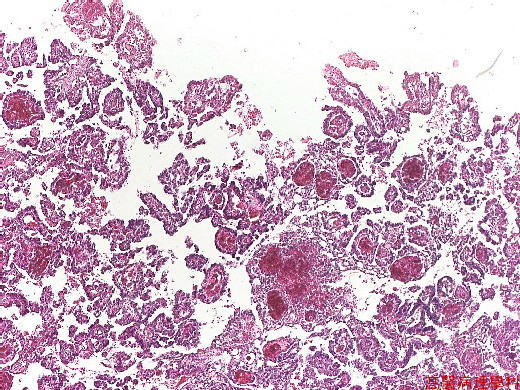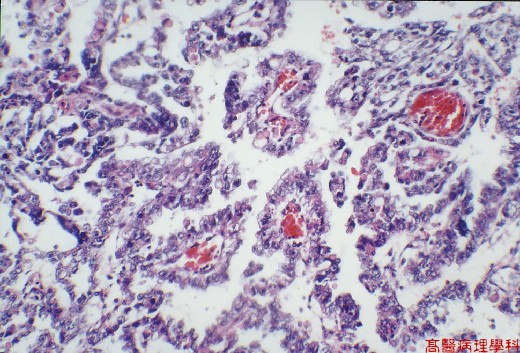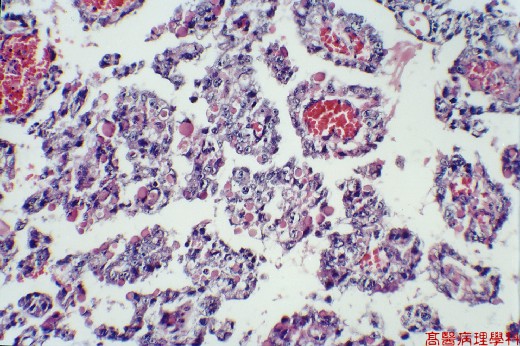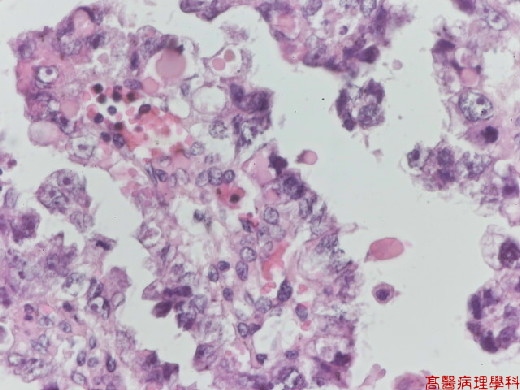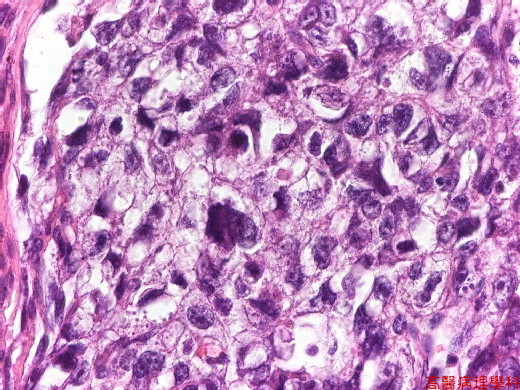¡mSlide 74.¡nYolk sac tumor (endodermal sinus tumor), Testis
A. Brief Descriptions¡G
-
A neoplasm composed of pure yolk sac elements ,is the most common tumor of infancy.
-
Yolk sac tumors of infancy have a good prognosis.
B. Gross Findings¡G
A soft consistency and a microcystic appearance on cross section.
C. Micro Findings¡G
-
Intermingling of epithelial and mesenchymal elements in a characteristic organoid fashion.
-
Microcystic, glandular-alveolar, and papillary formation.
-
Many cystic spaces lined by a very flattened, endothelial-like layer of cells.
-
The stroma can be quite cellular, spindle shaped cells or myxoid.
-
Perivascular Schiller-Duval bodies are the most distinctive feature:
-
papillary projections covered by two distinct cell layers separated from each other by a delicate fluorovascular stroma.
-
-
Hyaline intracytoplasmic or extracytoplasmic round inclusions.
-
eosinophilic, PAS stain positive and diastase resistance.
-
immunocytochemistry forá -fetoprotein.
-
D. Others:
-
Developed teratoma mimicking embryonal yolk sac tissue.
-
Elevated serum £\ -fetoprotein (tumor marker).
-
Two distinct circumstances:
-
A pure form - with the classic organoid appearance (described by Teilum) in infants and children, with an excellent prognosis.
-
A component of a mixed germ cell tumor in adults, with a lesser differentiated and more malignant appearance, and worse prognosis.
-
E. Reference¡G
Robbins Pathologic Basis of Disease, 6th ed. P.1075-1076.
¡@
¡@
|
|
¡i Fig. 74-1 (2X)¡jTumor cells in cystic pattern.
¡@
|
|
¡i Fig. 74-2 (2X)¡jPapillary pattern with Schiller-Duval bodies.
¡@
¡@
|
|
¡i Fig. 74-3 (4X)¡jPerivascular Schiller-Duval bodies are the most distinctive feature.
¡@
|
|
¡i Fig. 74-4 (4X)¡jPerivascular Schiller-Duval bodies are the most distinctive feature.Intracytoplasmic and extracytoplasmic inclusion bodies are seen.
|
|
¡i Fig. 74-5 (10X)¡jIntracytoplasmic and extracytoplasmic inclusion bodies are seen.
¡@
¡@
|
|
¡i Fig. 74-6 (40X)¡jHyperchromatic cancer cells in solid pattern.

